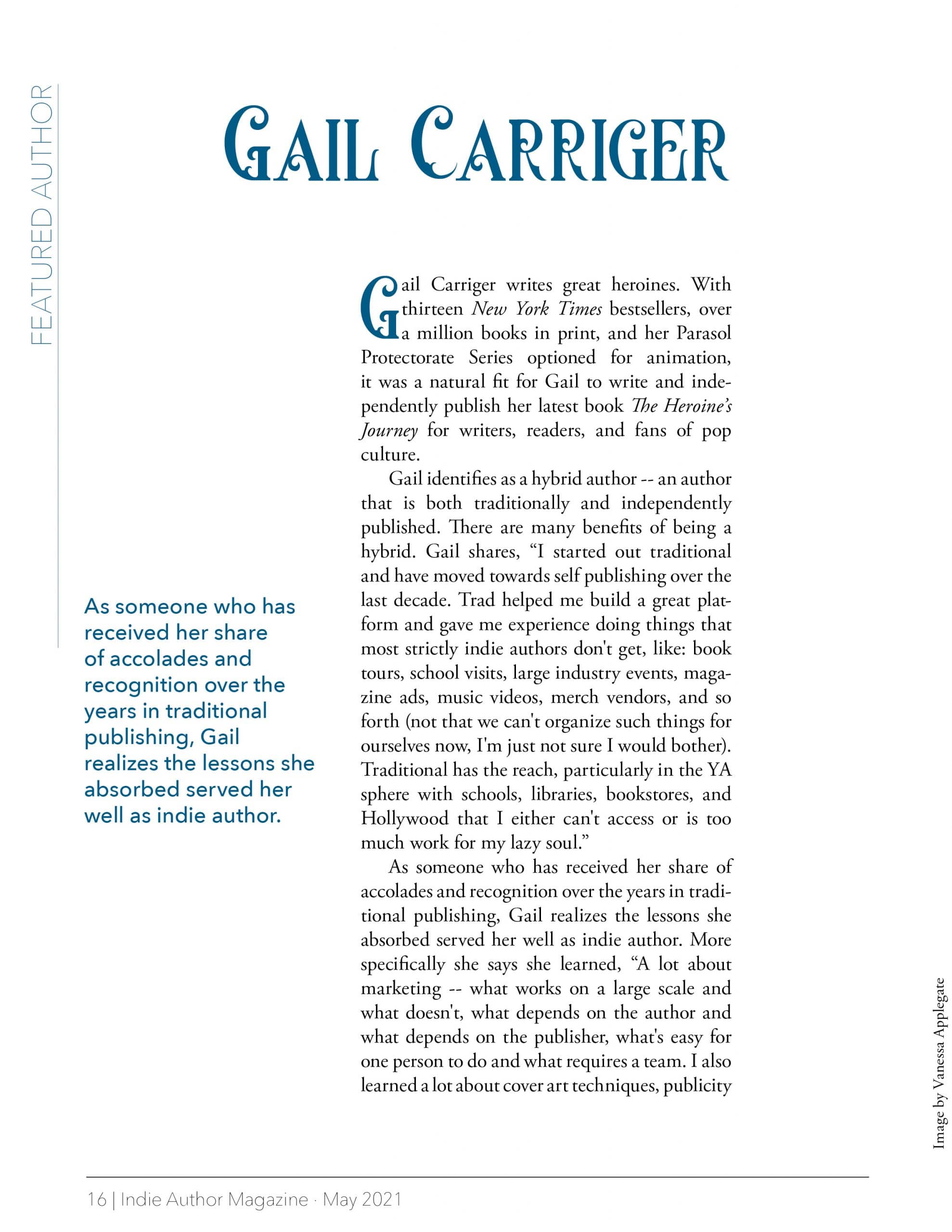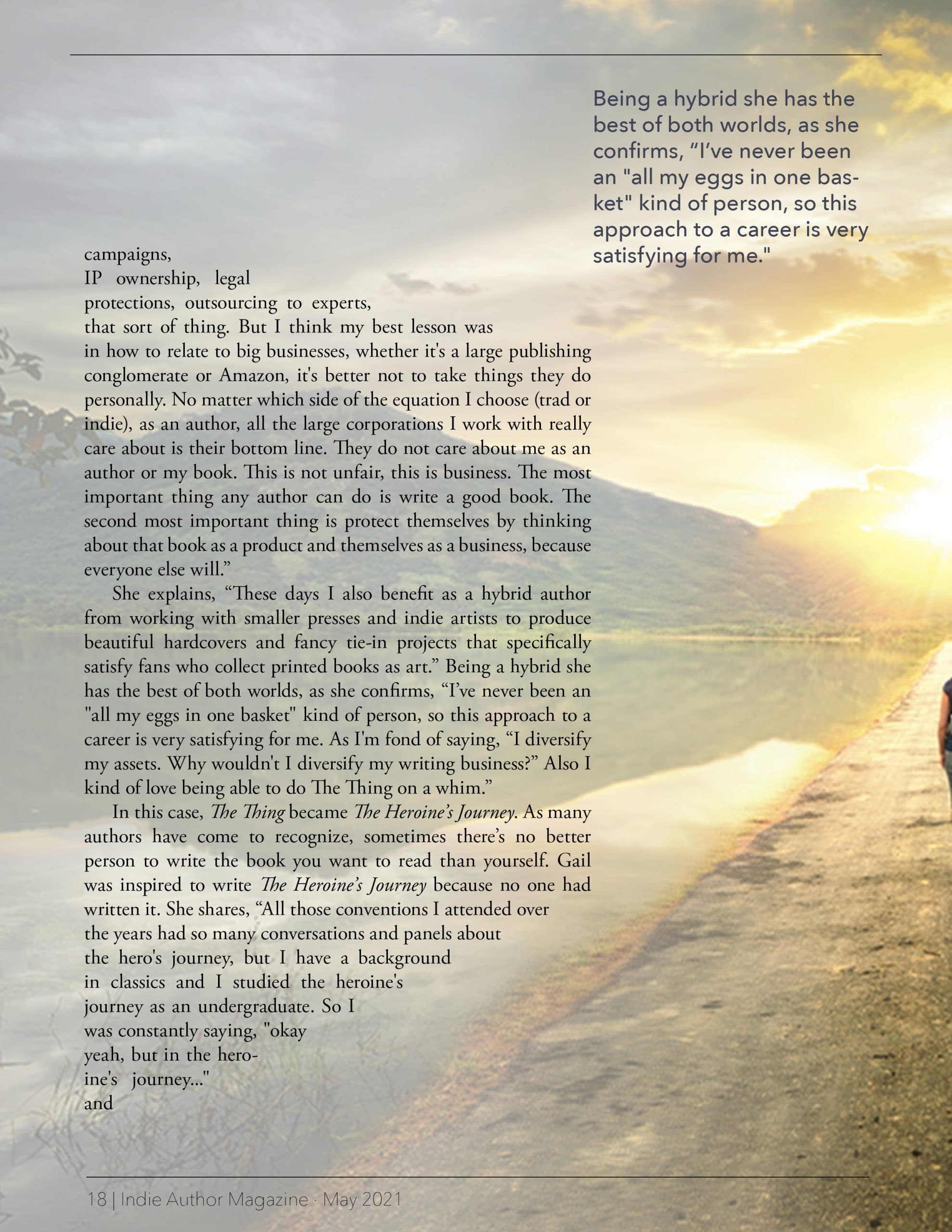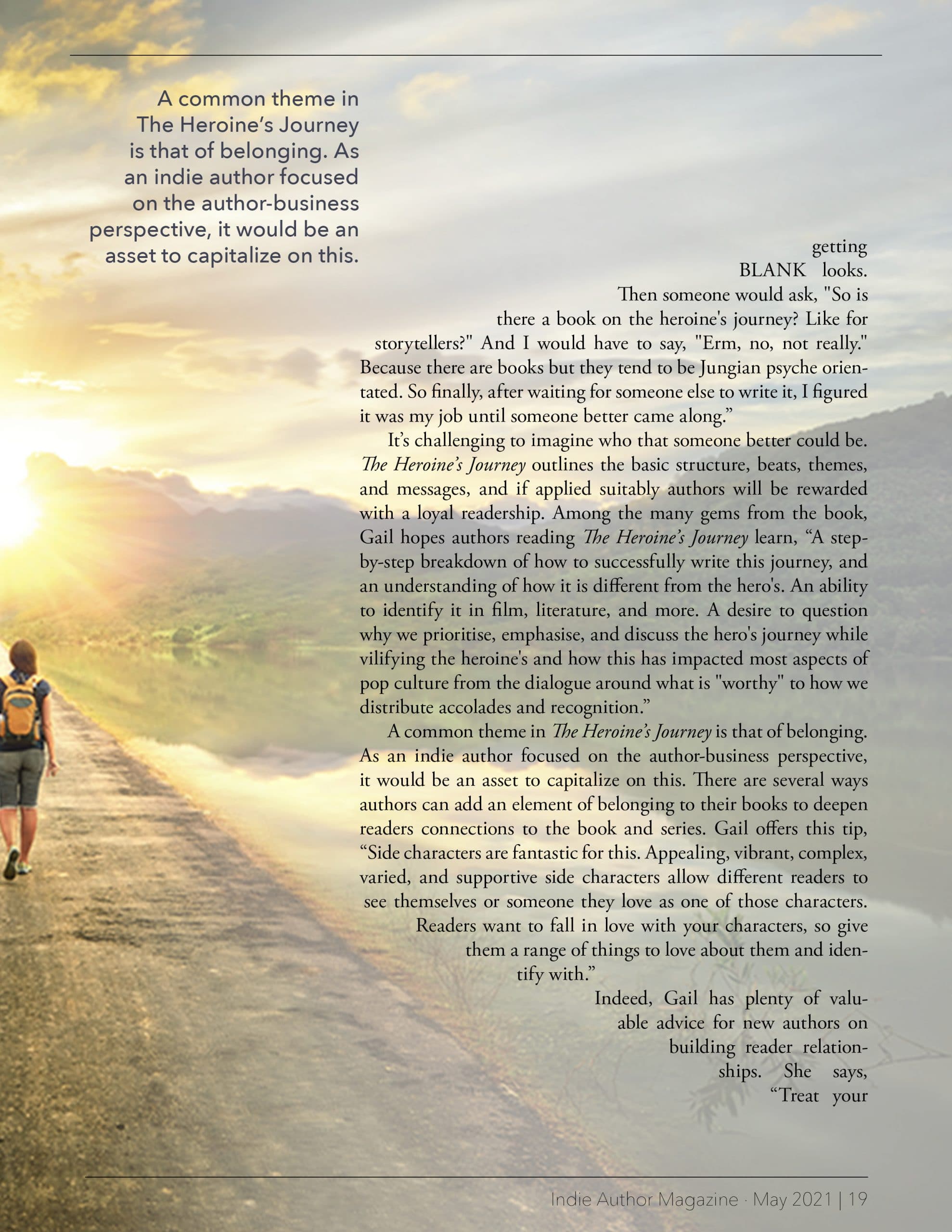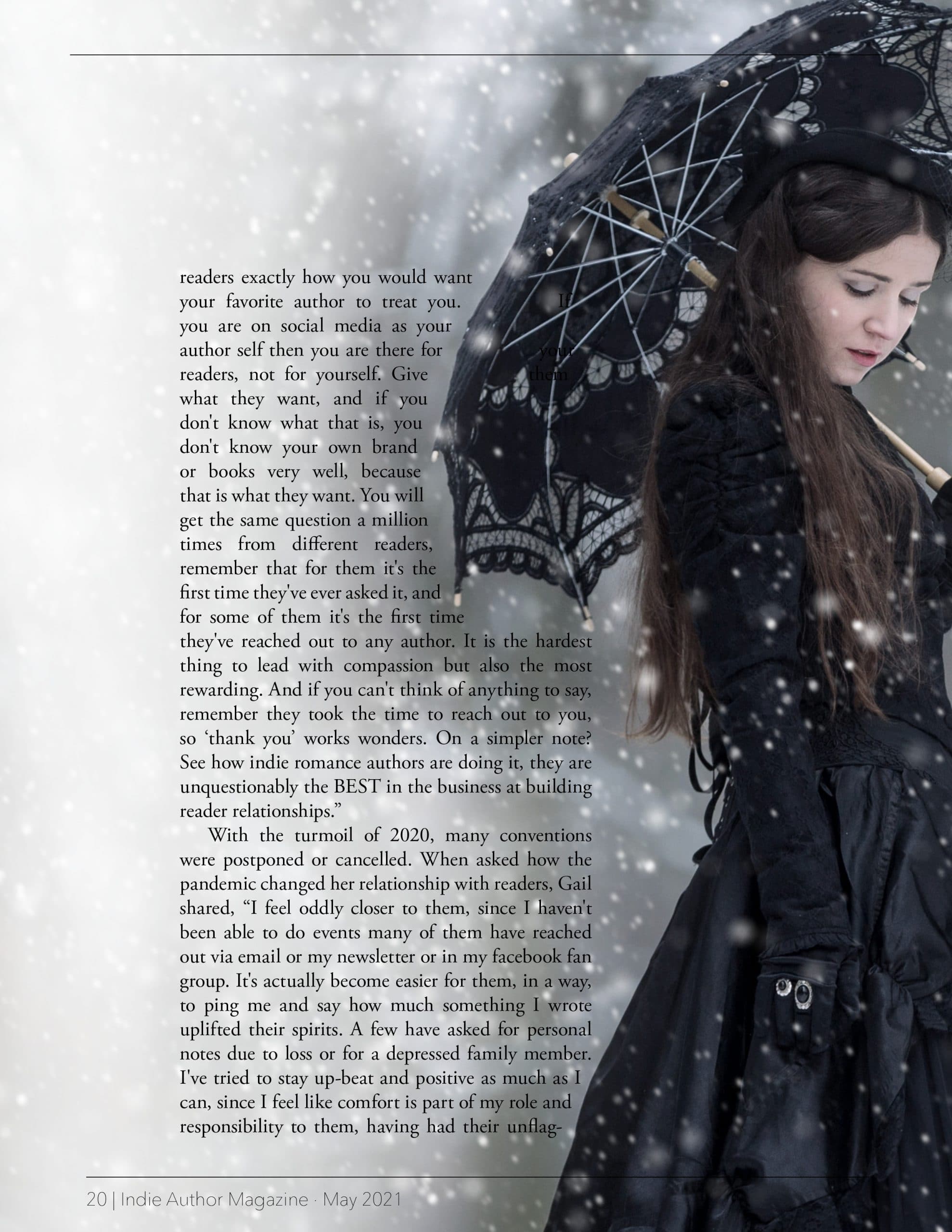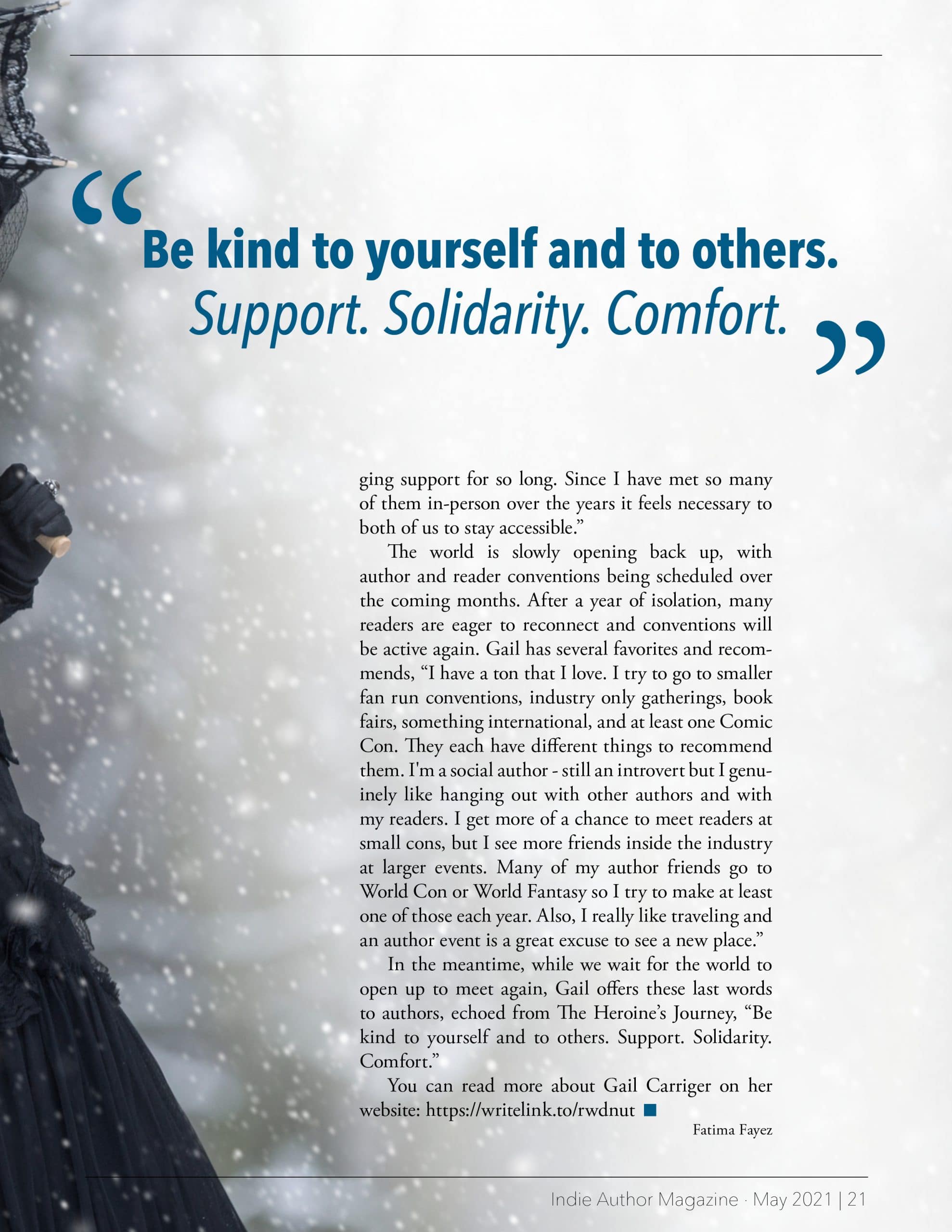Gail Carriger writes great heroines. With thirteen New York Times bestsellers, over a million books in print, and her Parasol Protectorate Series optioned for animation, it was a natural fit for Gail to write and independently publish her latest book The Heroine’s Journey for writers, readers, and fans of pop culture.
Gail identifies as a hybrid author — an author that is both traditionally and independently published. There are many benefits of being a hybrid. Gail shares, “I started out traditional and have moved towards self publishing over the last decade. Trad helped me build a great platform and gave me experience doing things that most strictly indie authors don’t get, like: book tours, school visits, large industry events, magazine ads, music videos, merch vendors, and so forth (not that we can’t organize such things for ourselves now, I’m just not sure I would bother). Traditional has the reach, particularly in the YA sphere with schools, libraries, bookstores, and Hollywood that I either can’t access or is too much work for my lazy soul.”
As someone who has received her share of accolades and recognition over the years in traditional publishing, Gail realizes the lessons she absorbed served her well as indie author. More specifically she says she learned, “A lot about marketing — what works on a large scale and what doesn’t, what depends on the author and what depends on the publisher, what’s easy for one person to do and what requires a team. I also learned a lot about cover art techniques, publicity campaigns, IP ownership, legal protections, outsourcing to experts, that sort of thing. But I think my best lesson was in how to relate to big businesses, whether it’s a large publishing conglomerate or Amazon, it’s better not to take things they do personally.
No matter which side of the equation I choose (trad or indie), as an author, all the large corporations I work with really care about is their bottom line. They do not care about me as an author or my book. This is not unfair, this is business. The most important thing any author can do is write a good book. The second most important thing is protect themselves by thinking about that book as a product and themselves as a business, because everyone else will.”
She explains, “These days I also benefit as a hybrid author from working with smaller presses and indie artists to produce beautiful hardcovers and fancy tie-in projects that specifically satisfy fans who collect printed books as art.” Being a hybrid she has the best of both worlds, as she confirms, “I’ve never been an “all my eggs in one basket” kind of person, so this approach to a career is very satisfying for me. As I’m fond of saying, “I diversify my assets. Why wouldn’t I diversify my writing business?” Also I kind of love being able to do The Thing on a whim.”
In this case, The Thing became The Heroine’s Journey. As many authors have come to recognize, sometimes there’s no better person to write the book you want to read than yourself. Gail was inspired to write The Heroine’s Journey because no one had written it. She shares, “All those conventions I attended over the years had so many conversations and panels about the hero’s journey, but I have a background in classics and I studied the heroine’s journey as an undergraduate. So I was constantly saying, “okay yeah, but in the heroine’s journey…” and getting BLANK looks. Then someone would ask, “So is there a book on the heroine’s journey? Like for storytellers?” And I would have to say, “Erm, no, not really.” Because there are books but they tend to be Jungian psyche orientated. So finally, after waiting for someone else to write it, I figured it was my job until someone better came along.”
It’s challenging to imagine who that someone better could be. The Heroine’s Journey outlines the basic structure, beats, themes, and messages, and if applied suitably authors will be rewarded with a loyal readership. Among the many gems from the book, Gail hopes authors reading The Heroine’s Journey learn, “A step-by-step breakdown of how to successfully write this journey, and an understanding of how it is different from the hero’s. An ability to identify it in film, literature, and more. A desire to question why we prioritise, emphasise, and discuss the hero’s journey while vilifying the heroine’s and how this has impacted most aspects of pop culture from the dialogue around what is “worthy” to how we distribute accolades and recognition.”
A common theme in The Heroine’s Journey is that of belonging. As an indie author focused on the author-business perspective, it would be an asset to capitalize on this. There are several ways authors can add an element of belonging to their books to deepen readers connections to the book and series. Gail offers this tip, “Side characters are fantastic for this. Appealing, vibrant, complex, varied, and supportive side characters allow different readers to see themselves or someone they love as one of those characters. Readers want to fall in love with your characters, so give them a range of things to love about them and identify with.”
Indeed, Gail has plenty of valuable advice for new authors on building reader relationships. She says, “Treat your readers exactly how you would want your favourite author to treat you. If you are on social media as your author self then you are there for your readers, not for yourself. Give them what they want, and if you don’t know what that is, you don’t know your own brand or books very well, because that is what they want. You will get the same question a million times from different readers, remember that for them it’s the first time they’ve ever asked it, and for some of them it’s the first time they’ve reached out to any author. It is the hardest thing to lead with compassion but also the most rewarding. And if you can’t think of anything to say, remember they took the time to reach out to you, so “thank you” works wonders. On a simpler note? See how indie romance authors are doing it, they are unquestionably the BEST in the business at building reader relationships.”
With the turmoil of 2020, many conventions were postponed or cancelled. When asked how the pandemic changed her relationship with readers, Gail shared, “I feel oddly closer to them, since I haven’t been able to do events many of them have reached out via email or my newsletter or in my facebook fan group. It’s actually become easier for them, in a way, to ping me and say how much something I wrote uplifted their spirits. A few have asked for personal notes due to loss or for a depressed family member. I’ve tried to stay up-beat and positive as much as I can, since I feel like comfort is part of my role and responsibility to them, having had their unflagging support for so long. Since I have met so many of them in-person over the years it feels necessary to both of us to stay accessible.”
The world is slowly opening back up, with author and reader conventions being scheduled over the coming months. After a year of isolation, many readers are eager to reconnect and conventions will be active again. Gail has several favorites and recommends, “I have a ton that I love. I try to go to smaller fan run conventions, industry only gatherings, book fairs, something international, and at least one Comic Con. They each have different things to recommend them. I’m a social author – still an introvert but I genuinely like hanging out with other authors and with my readers. I get more of a chance to meet readers at small cons, but I see more friends inside the industry at larger events. Many of my author friends go to World Con or World Fantasy so I try to make at least one of those each year. Also, I really like traveling and an author event is a great excuse to see a new place.”
In the meantime, while we wait for the world to open up to meet again, Gail offers these last words to authors, echoed from The Heroine’s Journey, “Be kind to yourself and to others. Support. Solidarity. Comfort.”
You can read more about Gail Carriger on her website: www.gailcarriger.com

